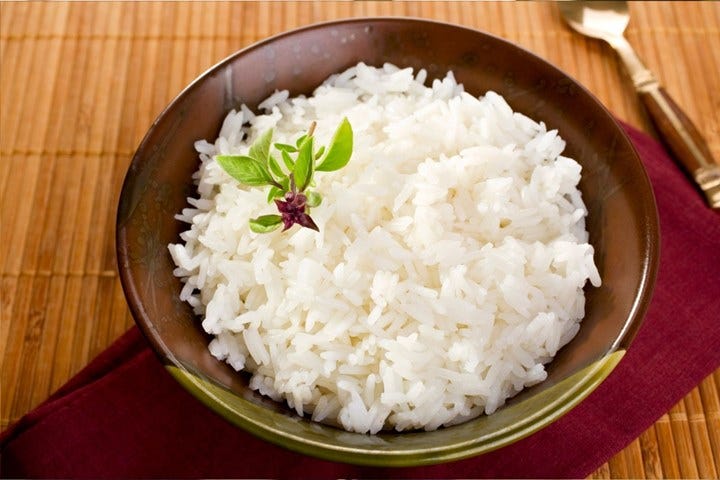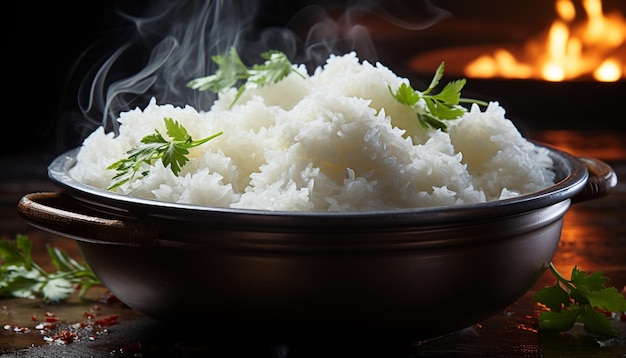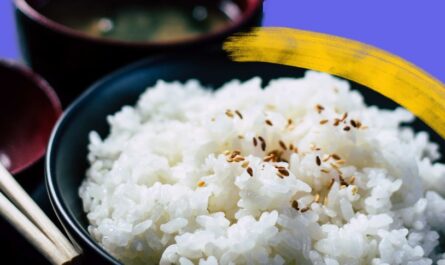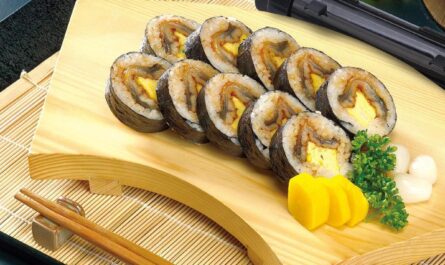Sushi, with its delicate flavors and intricate presentation, is a beloved dish worldwide. At its heart, sushi is more than just food; it’s an experience, blending taste, aroma, and appearance. A critical component that impacts sushi’s taste is the correct rice vinegar amount for sushi. Whether you’re a seasoned chef or a home cook, understanding how to perfect this balance is essential in crafting an ideal sushi experience.

The Significance of Rice Vinegar
Used as a seasoning, rice vinegar is essential in sushi preparation. It not only enhances the flavor of sushi rice but also adds a subtle zesty kick that elevates the roll’s taste profile. The correct amount of rice vinegar introduces a sublime harmony of flavors, transforming plain rice into the base of exquisite sushi.
What is Rice Vinegar?
Rice vinegar is a sweet and mild vinegar made from fermented rice. Common in Asian cuisine, it distinguishes itself by being gentler and less acidic than other vinegars.
Why is Rice Vinegar Important in Sushi?
Rice vinegar is not only a flavor enhancer but also a preservative. It adds a slight acidity, balancing the sweetness and saltiness of sushi rice perfectly. This balance is crucial to avoid overpowering the other ingredients in a sushi roll.
Determining the Correct Rice Vinegar Amount for Sushi
Finding the right rice vinegar amount for sushi is key. Too little vinegar and the rice may taste bland; too much, and it may overwhelm the dish. Here’s a practical guide to get it right.
Basic Measurements
A standard ratio for seasoning sushi rice is 180ml of vinegar to 1kg of rice. Depending on your preference, you might want to adjust this ratio slightly.
The Role of Taste
Taste plays a vital role in determining the right amount. Always taste your rice as you season it. Adjust the ratio until the taste aligns with your preferences.
Additional Ingredients for Sushi Rice
While rice vinegar is the cornerstone of sushi rice seasoning, several other essential ingredients contribute to the perfect sushi rice.
Sugar and Salt
Along with vinegar, sugar and salt are added to sushi rice to enhance its taste. Typically, 6 tablespoons of sugar and 2 tablespoons of salt per 180ml of vinegar is a good starting point.
Optional Dashi
For a deeper umami flavor, some chefs add a hint of dashi stock to the mix. This addition can lend your sushi rice a richer flavor profile.
Steps to Preparing Perfect Sushi Rice
Creating sushi rice might seem daunting, but broken down into straightforward steps, it becomes quite simple.
Washing the Rice
Washing your rice is crucial to remove excess starch and ensure the rice has the right texture once cooked.
Cooking the Rice
Use a rice cooker for best results. Measure the water accurately to avoid mushy or dry rice. For more on this, exploring best pots for sushi rice can be enlightening.
Seasoning the Rice
Once cooked, incorporate your vinegar mixture. Gently fold the rice using a paddle to ensure even seasoning.
Allowing the Rice to Cool
Let the rice cool to room temperature before using it for sushi. This step ensures the rice binds well with the nori and fillings.
Common Mistakes to Avoid
Several pitfalls can undermine your sushi rice preparation. Avoid these common mistakes to ensure your sushi rice is perfect every time.
Over-wetting the Rice
Adding too much seasoning or cooking with too much water can make the rice soggy. Ensure you adhere to recommended measurements.
Over-handling the Rice
Handling the rice too much can make it sticky and clumpy. Work with a delicate touch.
Advanced Tips for Perfection
Once you’ve mastered basic sushi rice preparation, consider these advanced tips to refine your craft.
Experiment with Different Vinegar Types
Consider trying senbei or red rice vinegar variants for a unique twist on traditional sushi rice.
Explore Creative Flavor Blends
Gingers, citrus zest, or yuzu can add unparalleled depth to the sushi rice, your sushi creativity knows no bounds.
Conclusion: Perfect Sushi Begins with Perfect Rice
The significance of the right rice vinegar amount for sushi cannot be overstated. It influences the overall taste and enjoyment of sushi significantly. As an aspiring sushi maker, dedicating time to understanding this aspect will enhance your culinary creations exponentially. Explore the nuances of taste with precision and creativity, and your sushi will reflect the effort.

Frequently Asked Questions
What kind of rice is ideal for sushi?
Short-grain rice is best, as its sticky texture binds the sushi ingredients together effectively.
Can I adjust sugar and salt to my taste?
Yes, after experimenting with the basic measurements, feel free to adjust the sugar and salt to suit your preferences.
How should I store leftover sushi rice?
Store in an airtight container in the refrigerator and consume within a day for best taste and texture.
This article contains affiliate links. We may earn a commission at no extra cost to you.




